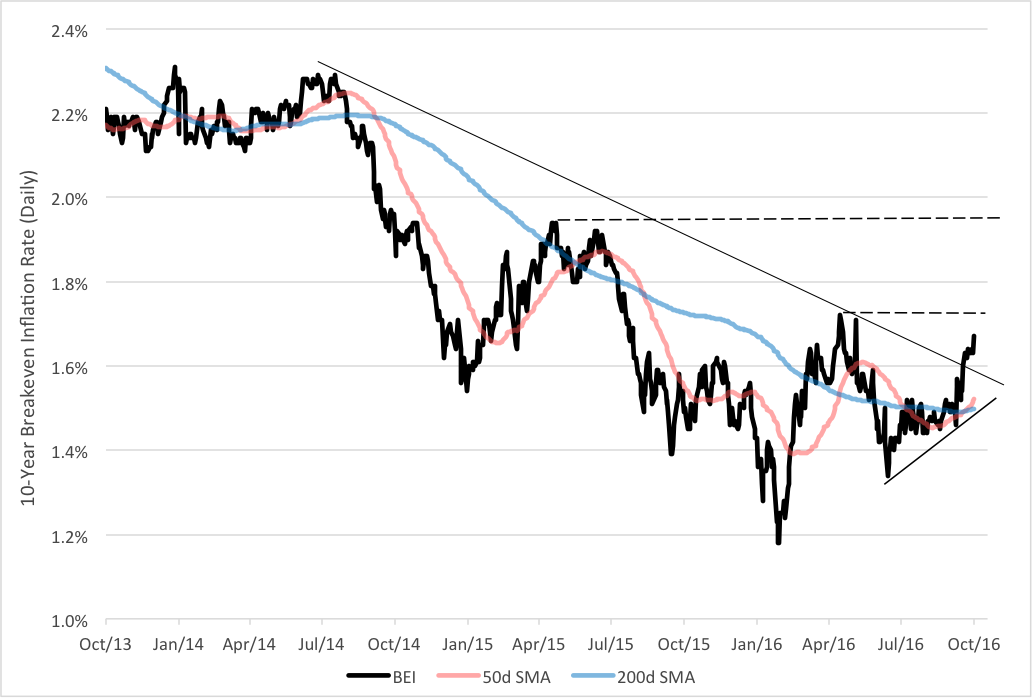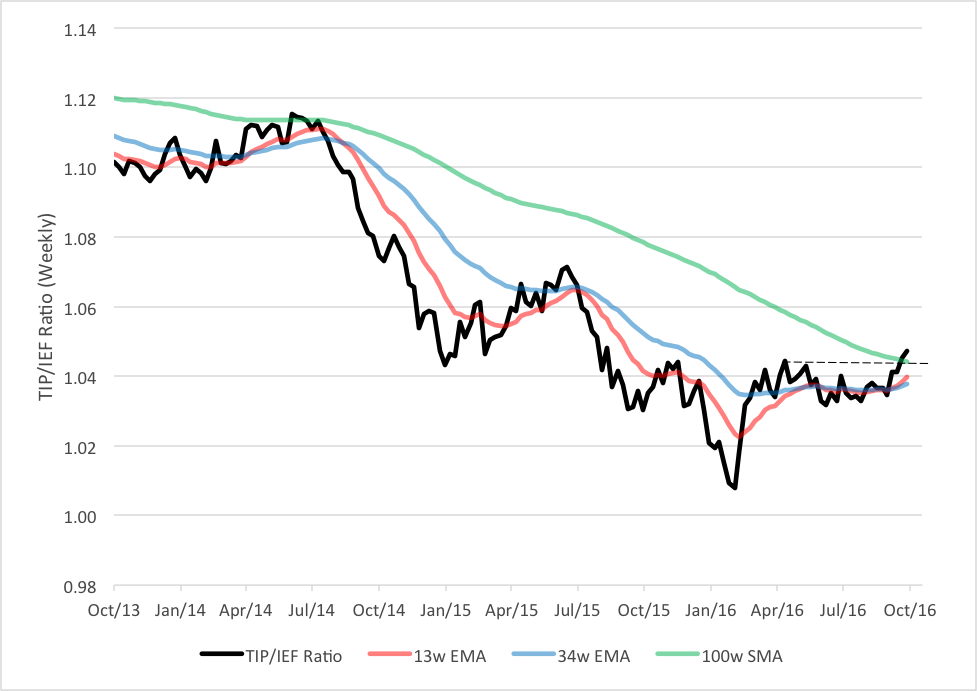The Federal Reserve, as you probably know, has a dual mandate: to maximize employment and to stabilize prices. Every month, the Fed gets graded on its inflation obligation when the Consumer Price Index (CPI) is updated.
I’m an impatient person. I get antsy waiting for the monthly backward-looking CPI figures. I want to know about inflation now and, more than that, about inflationary expectations going forward. After all, many investment decisions, e.g., stock/bond allocations and yield curve positioning, are driven by CPI prospects.
Luckily, I don’t have to cool my heels while the Bureau of Labor Statistics conducts its retrospective price surveys. I can get a daily read on inflationary expectations by tracking the market-driven breakeven inflation (BEI) rate. You can find the BEI by taking the difference between the yield on a conventional Treasury note or bond and an inflation-linked security with the same maturity.
My preference is to track the 10-year BEI, so I compare the 10-year T-note to its Treasury Inflation-Protected Security (TIPS) analog. The cash flows from TIPS are indexed to the CPI, but like all government securities, the notes themselves are priced daily in the open market. Investors and traders value TIPS by gauging the contours of the inflationary landscape between CPI releases.
TIPS yields are generally lower than the rates associated with conventional, or non-indexed, Treasurys. For example, at the end of last week, the 10-year T-note traded at a yield of 1.80 percent while the 10-year TIPS was priced to yield 0.13 percent, making the BEI 1.67 percent. The chart below depicts daily changes in the 10-year BEI over the past three years.

So, what’s the significance of the BEI? Let’s first deal with the word “breakeven.” The BEI gets its name because it represents a point of indifference. At 1.67 percent, you’d receive approximately the same total return on your TIPS as you would on a conventional T-note if CPI inflation averages that rate over the next 10 years. In other words, if your expectation for annual inflation over the coming decade is 1.67 percent, you’d be indifferent to owning TIPS over non-indexed T-notes. But, if you feel inflation will exceed 1.67 percent, you’d likely prefer TIPS (remember, the semi-annual coupon payments and the principal are indexed to CPI). If you think inflation’s headed to a lower average rate, you’d probably go with conventional Treasurys.
Now, let’s consider that chart. Back in February, the 10-year BEI cratered at 1.18 percent. Now we’re seeing a re-test of the April–May rebound that followed. But this time, there’s a much stronger expectation of a Fed rate hike than in the spring, thanks in great part to jawboning by Open Market Committee members. If BEI breaks—and stays—above 1.70 percent, the next upside objective is the 1.90 percent level. BEI’s congestion area, developed over the summer and early autumn, was like a coiled spring that, once released, propelled the rate to pierce the downtrend line extending back to July 2014.
“All fine and good,” you may say, “but how does this help me?”
Well, aside from giving you time to readjust your portfolio’s fixed income exposure and duration, there’s an ETF play here.
The 10-year BEI is proxied by the price ratio of the iShares TIPS Bond ETF (NYSE Arca: TIP) versus the iShares 7-10 Year Treasury Bond ETF (NYSE Arca: IEF). Here, since we’re dealing with price rather than yield, the ratio’s determined by dividing the TIP price by IEF’s value. Look at the weekly chart of the ratio below. You should see a trajectory very much like the BEI chart above.

Notice the breakout? The TIP/IEF ratio’s broken above its 100-week simple moving average (SMA) on the heels of a bullish crossover of its 13- and 34-week exponential moving averages. Without going into a bunch of technical interpretation, suffice it to say that this sets up TIPS as the better buy for income-focused investors—for the long term.
Now, in my neck of the woods, the price of eggs and bacon hasn’t yet started to climb, but I’m stocking up because I think I finally smell some inflation cooking.
Brad Zigler is WealthManagement.com's Alternative Investments Editor. Previously, he was the head of Marketing, Research and Education for the Pacific Exchange's (now NYSE Arca) option market and the iShares complex of exchange traded funds.

